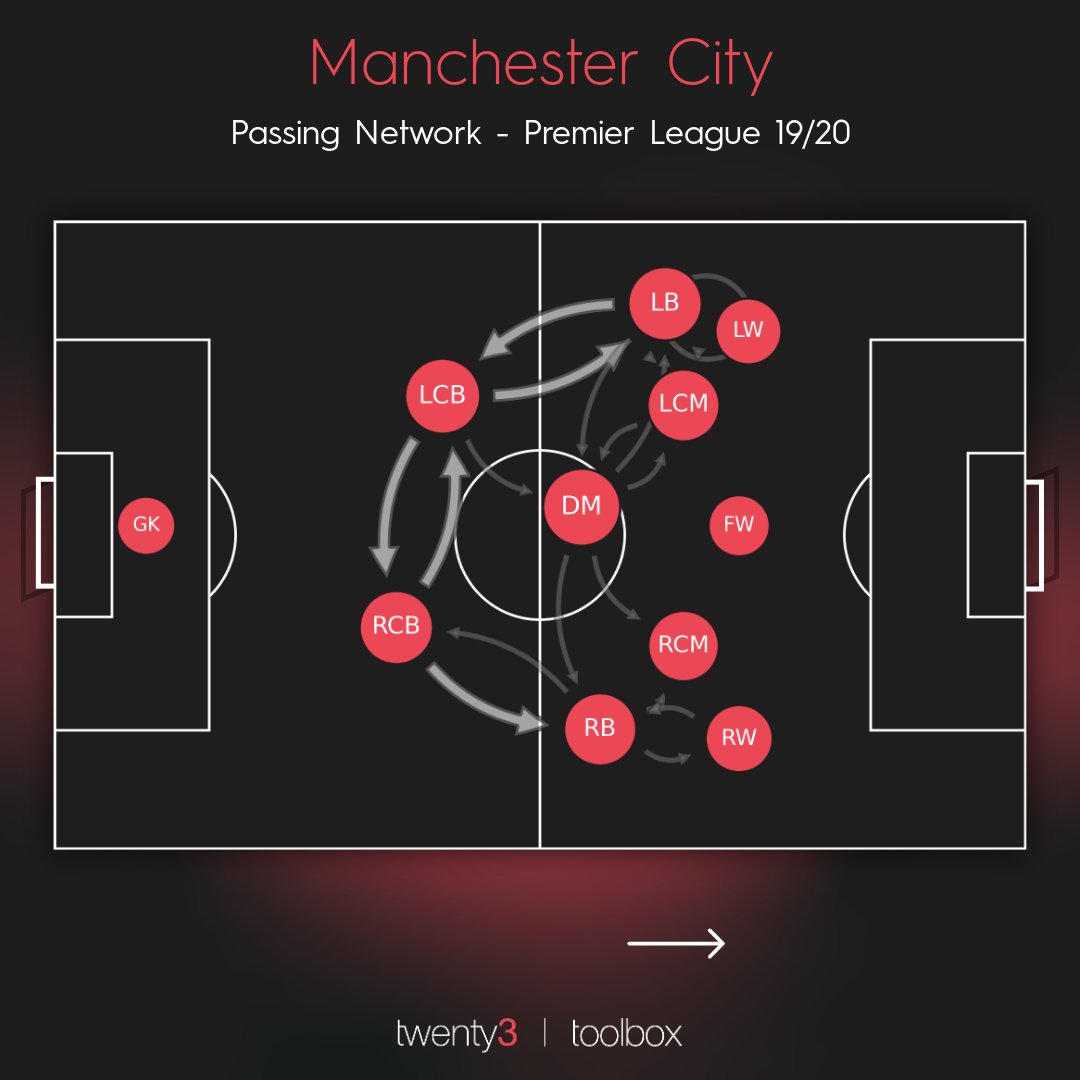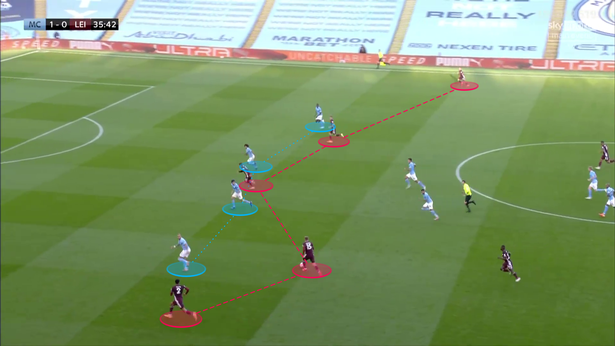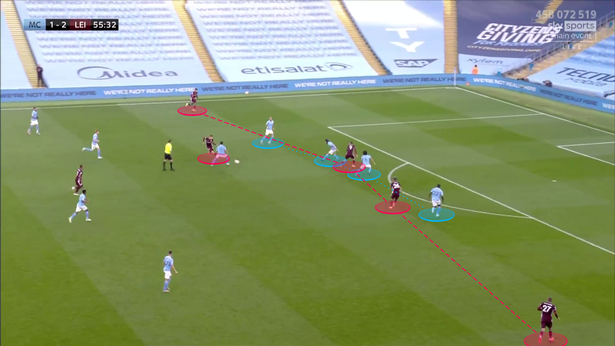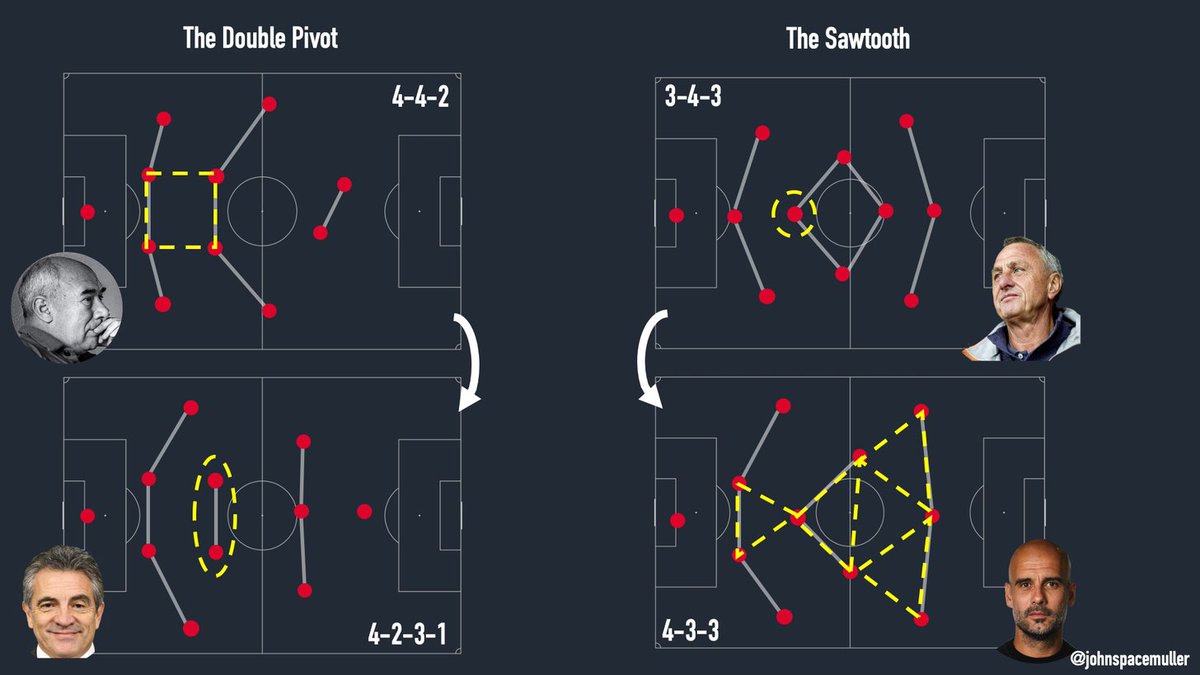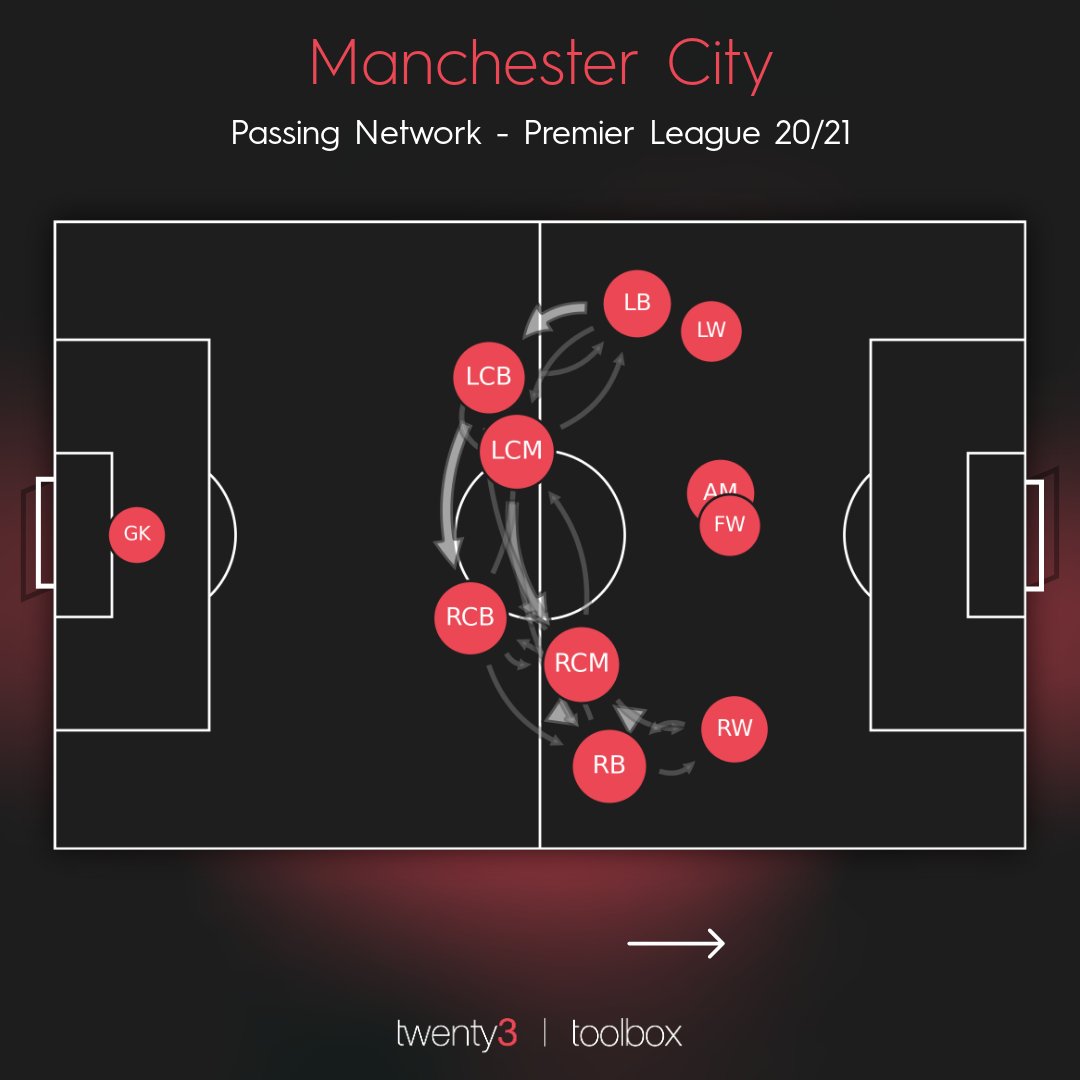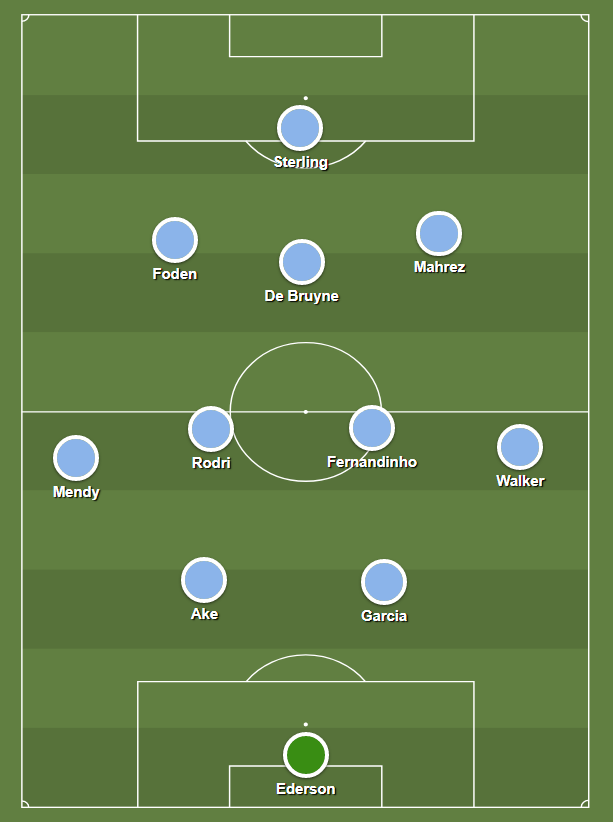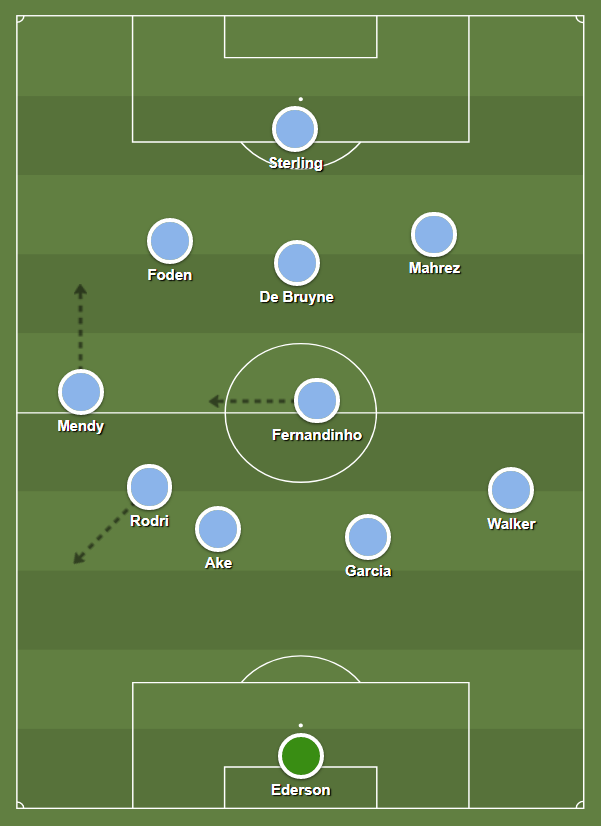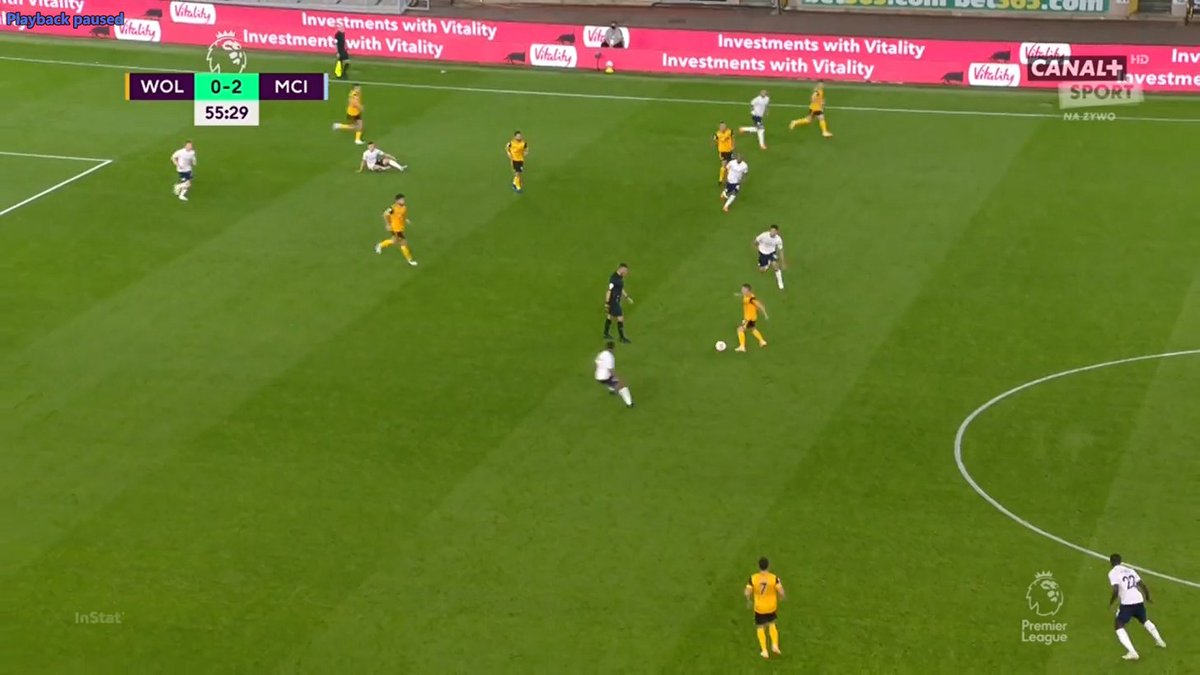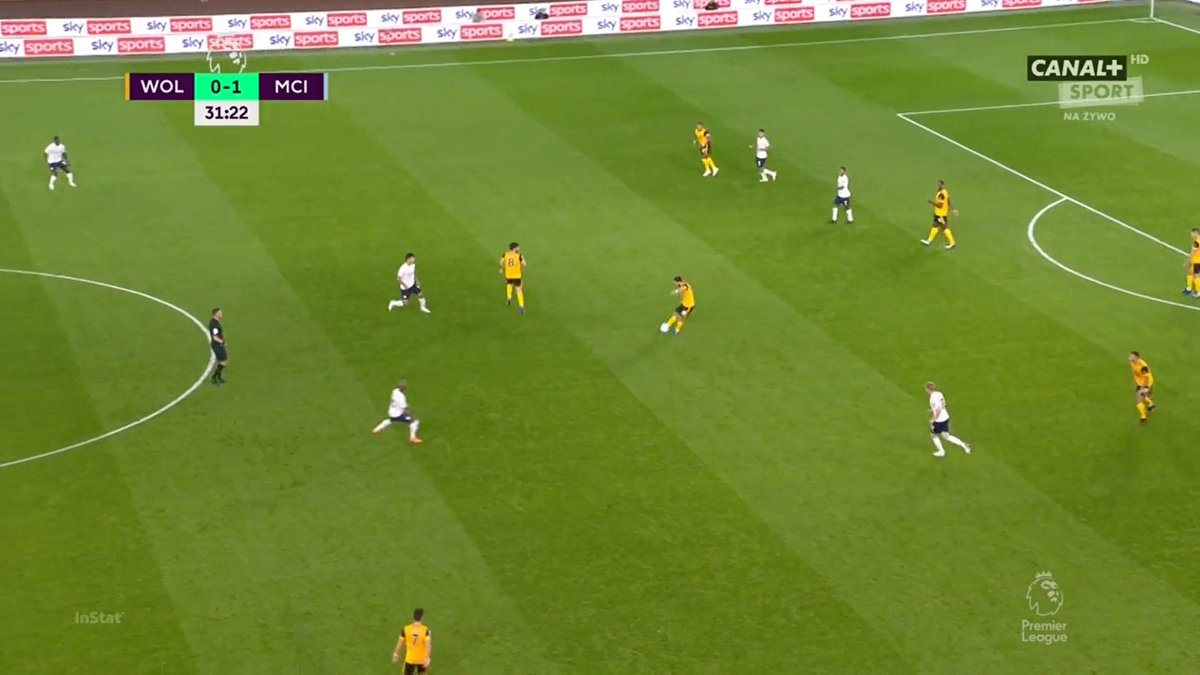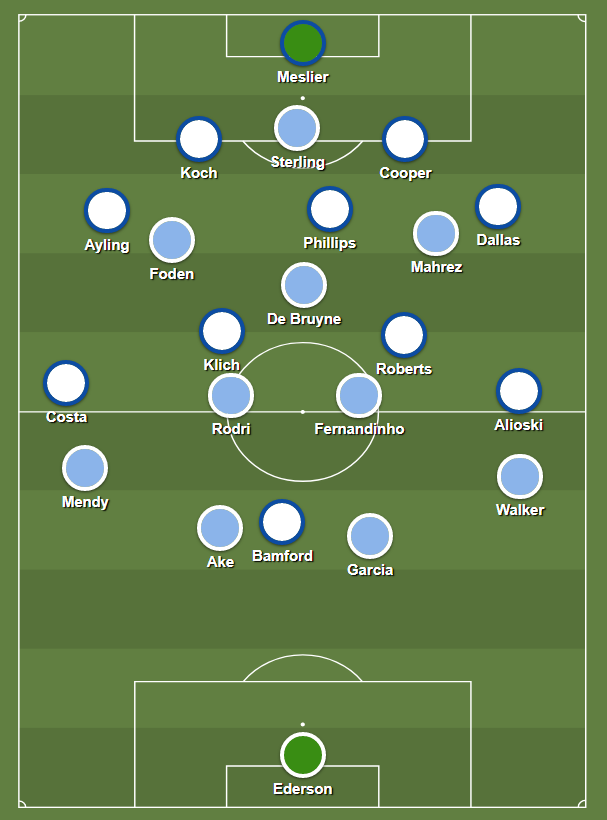Some tactical thoughts ahead of Manchester City’s visit to Leeds on Saturday #lufc: [thread]
What is there to say about Manchester City that isn’t already known? This is doubly true for Leeds fans, who have seen Marcelo Bielsa set up his team in a manner very similar to Guardiola’s City: https://medium.com/@allstatsarentwe/just-how-similar-are-manchester-city-to-leeds-united-f675de41b5e8">https://medium.com/@allstats...
However, there are interesting aspects to talk about in attempting to answer this question. Primarily: Manchester City have gone through something of a structural evolution this season.
This is about as perfect a structure as you could imagine. In each wide area, the team breaks down into triangle units who can build up on either side of the pitch and feed the ball into the penalty area where the striker (and the other triangle unit) will be waiting.
In between, the defensive midfielder helps in linking everything together and, importantly, offers a defensive buffer in front of the defence, helping them in the event of a defensive transition.
But herein lies the problem: the defensive transition. Like any other possession-heavy team, Manchester City look to compact the space available to their opponents by pushing high with their back line in possession so that, in the event of a turnover,
they can press the opposition and prevent them from producing too much threat by way of counter-attacks.
If that doesn’t work, it means that they have to transition quickly into a deeper defensive structure and hope that they don’t get overrun doing it. The problem is, with advanced full backs and high lines,
this often leaves your two centre backs and your central midfielder in a footrace with opposition attackers.
In both cases, you can see that Leicester have got in behind City’s midfield with the ball and are attacking their back line directly. In the first instance, it’s 5v4 in Leicester’s favour. In the second, it’s 5vs5.
These were the scenarios that caused Pep to panic. And the solution for this problem came from his new assistant, the man who had replaced Mikel Arteta: Junma Lillo. https://spacespacespaceletter.com/the-unhappy-triumph-of-the-double-pivot/">https://spacespacespaceletter.com/the-unhap...
Lillo had played a 4-2-3-1 through much of his time as a coach and, lo and behold, this season has seen Guardiola adopting the same setup and in particular one feature: the double pivot.
A double pivot is simply a pairing of more defensively-minded midfielders just in front of the defence. Guardiola has used this structural aspect of the 4-2-3-1 to get both Fernandinho and Rodri into his team, giving a little bit more solidity for the transitional phases.
There has been an impact on City’s structure, though. Here’s their passing network from this season so far:
As you can see, the neat triangular units on either side of the field have broken down and there is a gaping hole in the central midfield area where previously the single pivot had operated.
Now the ‘free eights’ have migrated: one forwards and one backwards. Neither of the full backs have been able to get forwards as much as they would have liked and Kevin De Bruyne and whoever has played as the centre forward have largely been isolated.
Of course, this is early days in the 4-2-3-1 experiment. No doubt, the process is complexified by the fact that Guardiola is missing both Gabriel Jesus and Sergio Aguero at the same time.
In the build-up phase, the double pivot was designed so that the ball-near central midfielder would drop into the space vacated by the full back, giving space to the other central midfielder and offering cover to the fullback:
In the forward area, the four attacking players stayed very narrow, creating space for the full backs to move into, although the ball-far wide attacker would sometimes move out wider to spread the opposition defence.
No doubt, this was to facilitate the press in the event of a turnover. The lack of an extra ‘eight’ in the midfield meant that Kevin De Bruyne was more isolated and so the narrower Phil Foden and Riyad Mahrez prevented the Belgian from getting overrun in the midfield.
This didn’t always work: https://marksnotebook.substack.com/p/a-new-face-for-man-citys-counterpress">https://marksnotebook.substack.com/p/a-new-f...
Ironically enough, when it came to pressing, the double pivot seemed to go too far one way or the other. It was either too high:
It wasn’t simply in defensive transition that issues were emerging. There were also problems heading in the other direction.
The main problem was that neither full back got forward as much as would have benefitted the system. In the end, the back four and the double pivot often seemed isolated from the forward players and this caused the attackers to drop deeper to pick up the ball.
In the end, Guardiola brought off Fernandinho, replacing him with Liam Delap, a striker, and moving De Bruyne into the double pivot to try and help with the transition from a deeper area.
City’s 4-2-3-1 evolution, then, is suffering from teething problems at both ends of the pitch.
So where does this leave Leeds heading into the weekend?
Structurally, expect to see Leeds return to a 4-1-4-1 on Saturday if Guardiola persists with the 4-2-3-1. The 4-1-4-1 makes a certain amount of sense:
Structurally, expect to see Leeds return to a 4-1-4-1 on Saturday if Guardiola persists with the 4-2-3-1. The 4-1-4-1 makes a certain amount of sense:
As you can see, the Leeds full backs can track City’s wide players into the centre of the field, while Helder Costa and Gjanni Alioski will track the opponent’s fullbacks into their own half.
This will be a tale of two pressing battles. We’ve already seen that the City press is still experiencing teething problems in this new structure. Leeds have struggled so far against high presses. Could this be in their favour?
In the other direction, the question will be whether Leeds can continue to isolate City’s attacking and defensive lines during City’s build up phases. Can they keep Kyle Walker and Benjamin Mendy penned deeper than they would like?
Can they overload De Bruyne in the midfield area? Can they take the advantage from City being unable to field their first-choice strikers?
Beyond this, all eyes should be on the two different off-ball structures on display. Which will look the more functional: Guardiola’s zonal-oriented defensive structure? Or Marcelo Bielsa’s man-oriented one?
Of course, there is always the potential that Guardiola could deviate from the script in this game. He will treat Marcelo Bielsa with the utmost respect and the result could be that he tries something off the wall here.
Whatever happens, the game should be enthralling: a battle between two of the best minds in world football.
For Bielsa, this will be a free hit (although he won’t treat it as such). It will give us a good sense of how Leeds can match up with the big guns in the Premier League. But if it results in a loss, well it was expected.
For Guardiola, there is a little more riding on it. Liverpool are already ahead in the title race. And if City lose another game and against a promoted team as well, questions will rumble on about the Spaniard’s standing at the club.
If you prefer this thread in blog form: https://allstatsarentwe.substack.com/p/leeds-united-vs-manchester-city-a">https://allstatsarentwe.substack.com/p/leeds-u...
If you prefer it in audio form: https://pod.fo/e/9ef01 ">https://pod.fo/e/9ef01&q...
We have loads of bonus content available on our Patreon: http://www.patreon.com/allstatsarentwe ">https://www.patreon.com/allstatsa...
If you& #39;ve got this far, why not share the original tweet in this thread and tell your Leeds-supporting pals how ace we are?

 Read on Twitter
Read on Twitter